History
Why Deliverability Matters to Me
Welcome to deliverability week. I want to especially thank Al for doing a lot of work behind the scenes herding this group of cats. He’s an invaluable asset to the community.
Read MoreThe Case of the 500-mile Email
I stumbled across this story again this morning, and it’s such a lovely delivery yarn I thought I’d share it.
Read MoreAuthentication
Some notes on some of the different protocols used for authentication and authentication-adjacent things in email. Some of this is oral history, and some of it may be contradicted by later or more public historical revision.
Read MoreWant some history?
I was doing some research today for an article I’m working on. The research led me to a San Francisco Law Review article from 2001 written by David E. Sorkin. Technical and Legal Approaches to Unsolicited Electronic Mail (.pdf link). The text itself is a little outdated, although not as much as I expected. There’s quite a good discussion of various ways to control spam, most of which are still true and even relevant.
From a historical perspective, the footnotes are the real meat of the document. Professor Sorkin discusses many different cases that together establish the rights of ISPs to filter mail, some of which I wasn’t aware of. He also includes links to then-current news articles about filtering and spam. He also mentions different websites and articles written by colleagues and friends from ‘back in the day’ discussing spam on a more theoretical level.
CNET articles on spam and filtering was heavily referenced by Professor Sorkin. One describes the first Yahoo spam folder. Some things never change, such as Yahoo representatives refusing to discuss how their system works. There were other articles discussing Hotmail deploying the MAPS RBL (now a part of Trend Micro) and then adding additional filters into the mix a few weeks later.
We were all a little naive back then. We thought the volumes of email and spam were out of control. One article investigated the effectiveness of filters at Yahoo and Hotmail, and quoted a user who said the filters were working well.
Who didn't invent email, part 2
Back in 2014, Steve wrote an article discussing Shiva Ayyadurai,and his claims that he was the inventor of email. In that article he links to a number of articles from Techdirt. Earlier this year, Shiva sued Floor64, the parent company of Techdirt, as well as Michael Massnick the Founder, CEO and editor and Leigh Beadon, a writer for Techdirt. (Original Complaint pdf from ReCAP). Ars Technica has a good article on Shiva and his claims.![]()
The complaint asserts that the defendants defamed Shiva in their articles, caused him economic harm and inflicted emotional distress on him.
Today the judge dismissed the case (Memorandum and Order, pdf from ReCAP) against Michael and Leigh. The legal standard for punishable defamatory statements is there must be a way to prove them true or false. The judge ruled that since there is not a single definition of email, that there is no way to definitively prove Techdirt’s statements as true or false.
No one disputes the Shiva coded a system that encompasses the features we expect of any desktop or web based mail client. As many people have mentioned, the fact he was 14 and put together a complex program is impressive in and of itself. No one is disputing what he did accomplish.
To my mind the fundamental core of email is interoperability. It’s that I can sit in my lab at the University of Wisconsin, type a message, hit send and have someone in Boston receive the message. I can sit here in my office in California and write to my client in the the UK. The bits of the email client, which define email according to Shiva, are not email. They’re important for usability, but they’re not what makes email email.
According to Ars Technica, Shiva is going to appeal the dismissal.
EDIT: Techdirt has posted an article on the lawsuit and the dismissal.
The twilight of /8s
A “/8” is a block of 16,777,214 usable IP addresses. That’s a big fraction of the entire IPv4 address space – about 1/224, in fact. Each one is all the addresses that begin with a given number: 10.0.0.0/8 is all the IP addresses that begin with “10.”, “184.0.0.0/8” (or “184/8” for short) is all the IP addresses that begin with “184.” and so on.
How are they used? You can see in this map of the entire IPv4 Internet as of 2006.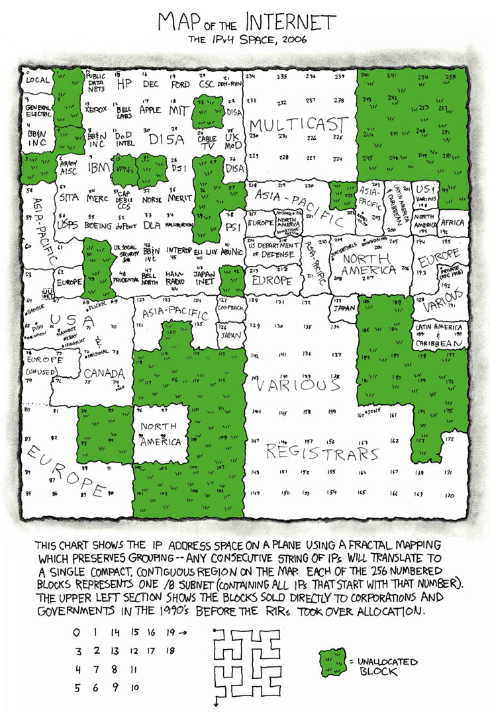
In the early days of the Internet /8s were given out directly to large organizations. If you look near the middle-top of the map, just left of “MULTICAST” and above “DISA” you can see “MIT”.
The Massachusetts Institute of Technology got into the Internet game pretty early. This is the first map I have where they appear, in June 1970: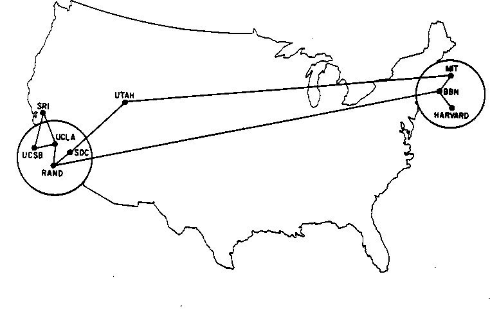
The Laboratory for Computer Science at MIT were assigned the 18.0.0.0/8 block sometime around 1977, according to RFC 739, though it looks like they may have been using it since at least 1976.
By 1983 (RFC 820) it belonged to the whole of MIT, rather just the CS Lab, though you have to wonder how long term that was supposed to be, given the block was named “MIT-TEMP” by 1983 (RFC 870). According to @fanf (who you should follow) it was still described as temporary until at least the 1990s.
But no longer. MIT is upgrading much of their network to IPv6, and they’ve found that fourteen million of their sixteen million addresses haven’t been used, so they’re consolidating their use and selling off eight million of them, half of their /8. Thanks, MIT.
Who else is still sitting on /8s? The military, mostly US, have 13. US Tech companies have 5. Telcos have 4. Ford and Daimler have one each. The US Post Office, Prudential Securities, and Societe Internationale de Telecommunications Aeronautiques each have one too.
One is set aside for use by amateur radio.
And two belong to you.
10.0.0.0/8 is set aside by RFC 1918 for private use, so you can use it – along with 192.168.0.0/16 and 172.160.0.0/12 – on your home network or behind your corporate NAT.
And the whole of 127.0.0.0/8 is set aside for the local address of your computer. You might use 127.0.0.1 most of the time for that, but there are 16,777,213 other addresses you could use instead if you want some variety. Go on, treat yourself, they’re all assigned to you.
Blackboxes and unknown effects
In my previous career I studied the effect of alcohol on developing embryos. It’s a bit weird I ended up in that field because embryological development always seemed to complex to me. And it was and is complicated. In a lot of ways, though, it was good training for deliverability. We dealt with a lot of processes that seem, on the surface, straightforward.
Fertilization happens, then you get a flat group of cells, those cells fold up into the neural tube, cells migrate around, things happen, limbs form, organs form and 21 days later you have a fluffy little chick.
The details in all those steps, though. They’re a bit more complicated, looking something like this: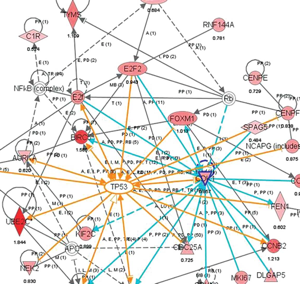
There are lots of different things going on inside the embryo to take it from a single cell up to a complex multicellular being. Genes turn on, genes turn off at different times in development, often driven by overlapping concentration gradients. Genes turn each other and themselves on and off. It’s complex, though, and there are things that happen that we don’t quite understand and have to black box. “If I add this protein, or take this gene and that gene away… what happens?”
A lot of that is like what email reputation is these days. There isn’t one factor in reputation, there are hundreds or thousands. They interact with each other, sometimes turning up reputation, sometimes turning down reputation. We figure this out by poking at the black box and seeing what happens. Unlike development, though, delivery rules are not fixed. They are changing along the way.
It’s not simple to explain delivery and how all the moving parts interact with each other. We don’t always know that doing A will lead to X. Because A -> X is not a straight line and there are other things that impact that line. Those other things also impact A, X and each other.
Delivery is a tangled web. On the surface it seems simple, but when you start peeling back the layers you discover the jumble of factors that all interact with each other. It’s what makes this a challenging field for all of us.
End of an era
A few moments ago, I cancelled one of my email addresses. This is an address that has been mine since somewhere around 1993 or 4. It was old enough to vote. And now it’s no more.
I am not even sure why I kept it for so long. It was my dialup account back when I was in grad school in Delaware. When I moved to Madison to work at the university, I kept it as a shell account and email address. I gave it up as my primary email address about the time it was bought by a giant networking company. By then I had my own domain and a mail server living behind the futon in the living room. That was back when we started WttW, somewhere around 2002.
15 years the address has mostly laid dormant. I used it for a couple yahoo groups accounts, but just lists that I lurked on.
I did use it as research for some past clients, typically the ones using affiliate marketers. “Our affiliates only ever send opt in mail!” Yeah, no. See, look, your affiliate is spamming me. My favorite was when said customer put me on the phone with the affiliate.
Truth, myths and realities
For a long time it was a known fact that certain ISPs recycled abandoned addresses into spamtraps. There were long discussions by senders about this process and how it happened. Then at a conference a few years ago representatives of ISPs got up and announced that they do not recycle addresses. This led to quite a bit of consternation about how deliverability folks were making things up and were untrustworthy and deceptive.
In the early 2000’s ISPs were throwing a lot of things at the wall to deal with mail streams that were 80 – 90% bulk. They tried many different things to try and tame volumes that were overwhelming infrastructure. ISPs did try recycled traps. I know, absolutely know, two did. I am very sure that others did, too, but don’t have specific memories of talking to specific people about it.
At that time, a lot of deliverability knowledge was shared through word of mouth. That turned into a bit of an oral history. The problem with oral history is that context and details get lost. We can use the story of the ISP that did/did not recycle traps as an example.
Deliverability folks talk about an ISP that recycles traps. They don’t mention how often it happens. Some folks make the assumption that this is an ongoing process. It’s not, but anyone who knows it’s not risks violating confidences if they correct it. Besides, if senders believe it’s an ongoing process maybe they’ll be better behaved. Eventually, the story becomes all ISPs recycle traps all the time. This is our “fact” that’s actually a myth.
Then an ISP employee goes to a conference an definitively states they don’t recycle traps. I believe he stated the truth as he knows it to be. That ISP moved on from recycled traps to other kinds of traps because there were better ways to monitor spam.
We were talking about this on one of the deliverability lists and I told another story.
[ISP] recycled addresses once – back when JD was there which must have been, oh, around 2005/6 or so. I heard this directly from JD. It wasn’t done again, but a whole bunch of people just assumed it was an ongoing thing. Since my knowledge was a private conversation between JD and me, I never felt comfortable sharing the information. Given the circumstances, I’ve decided it’s OK to start sharing that end of the story a little more freely.
No one set out to create a myth, it just happened. No one intended to mislead. But sometimes it happens.
The history of email
My first access to “the internet” was through a dialup modem on a VAX at the FDA. I was a summer intern there through my college career and then worked full time after graduation and before grad school. My email address ended in .bitnet. I could mail some places but not others. One of the places I couldn’t send mail was to my friends back on campus.
A few of those friends were computer science majors, so one weekend they tried to help me troubleshoot things. . There were text files that they ended up searching through looking up how to send mail from .bitnet to .edu. But it was all a baffling experience. Why couldn’t it just work? I had email, they had email, why could we not talk?
I never did figure out how to send email to campus from .bitnet.
Eventually, the FDA moved from BITNET to the internet and I had a .gov address. I could send mail around just by getting the recipients’s address. But the mystery of why I could mail some .edus and not others still lingers. I wonder what our setup was that we couldn’t send mail. I’ll probably never know. I don’t even have enough details to explain the problem to someone who would know. I suspect the answer will be “bang paths” or “host.txt” files, but I really don’t know.
SHOUTY CAPS!!!

Over at Meh Glenn Fleishman has put together a fascinating two-parter on the history of using ALL CAPS for emphasis. And SHOUTING.
Ray Tomlinson
Ray Tomlinson has passed away. Mainstream obituaries are going to focus on his being “the creator of email” or “the sender of the first email” or “the inventor of the @ sign in email addresses“.
All of which are true. He did send the first (networked) email. He did use the (otherwise mostly unused on TENEX) @ sign to separate user and host.
But he did a lot of other things with the basics of the modern Internet that are more important than the @-sign.
2016 Mary Litynski Award
The Mary Litynski Award is presented by M3AAWG to people who have done extensive work outside the public eye over a significant period of time. At the Dublin conference the award was presented to Rodney Joffe. A lot of other people will talk about Rodney’s accomplishments, including his role in the founding of Genuity, his work with the DMA in the early days of spam, his efforts against SMS spam and his efforts to secure the Internet infrastructure. But I have a much more personal perspective.
Rodney was seminal in changing my life and career path. Back in 1999, Rodney asked Steve to look into some DNS creativity he was testing. A few months later, Rodney invited Steve to join a new company he was founding based on that DNS creativity. We moved out the the Bay area and Steve started working for UltraDNS in early 2000.
Moving out to the Bay Area triggered my career shift into anti-spam and anti-abuse. I started working at MAPS (now Trend Micro) in their experimental consulting service division. We were the “carrot” end of the equation, where our job was to help companies minimize the abuse coming out of their networks.
After MAPS went through a round of layoffs in 2001, Rodney started recommending me as an email consultant to some of his connections in the marketing world. This work was a success and directly led to the founding of Word to the Wise and everything that flows from that.
M3AAWG has published a video where Rodney discusses his role in the history of spam and some of the other things he’s done to fight junk advertising (both fax and SMS spam). He sued junk faxers in small claims court. He was instrumental in getting SMS spam covered under the TCPA. He wrote the first global opt-out list supported by both the DMA and the ISPs and proved that global opt-out would never work. He literally pulled the plug on spamming customers.
Rodney says he’s “Not smart, just the guy who carries the bags of money and helps the smart people get things done.” I certainly don’t believe that is true. He has done things on the global scale to make the Internet a safer place for end users. But my appreciation is much more personal. I will forever be grateful to him for starting us on this path and the help and advice he gave us so many years ago.
thirty.years.com
Thirty years ago this Sunday, symbolics.com was registered – the first .com domain. It was followed, within a few months, by bbn.com, think.com, mcc.com and dec.com.
Symbolics made lisp machines – symbolics.com is now owned by a domain speculator.
BBN is a technology R&D company who’ve worked on everything. If I had to pick one thing they were involved with it’d be the Internet Message Processor – the router used on the very first Internet nodes. They are still around, as a division of Raytheon.
Think.com made some amazing massively parallel computers. Their hardware group was bought out by Sun, who were bought out by Oracle and think.com now redirects to a broken error page at oracle.com.
Mcc.com were the first – and for a while, the largest – computing research and development consortium in the US. They did groundbreaking work on everything from silicon to AI. Their domain is now a generic parked page owned by a domain speculator.
Dec.com were Digital Equipment Corporation – creators of the PDP, VAX, Alpha and StrongARM processors, amongst many other things. They were a huge company when I worked for them designing Alpha CPUs in the mid 90s, then they were acquired by Compaq, then HP, then split up. Their domain is now a personal website.
It took nearly three years to reach 100 registered .com domains and nearly 10 years to reach 9,000.
As of this morning there are 116,621,517 domains registered in .com, from (64 zeros).com to (64 letter z).com, out of a possible total of more than two googol – so there’s still a domain there for you.
221,848 of those domains in .com mention “mail”.
Who didn't invent email?
Who didn’t invent email? Shiva Ayyadurai.
He’s not the only one – I didn’t invent email either, nor did Abraham Lincoln, Boadicea or Tim Berners-Lee. So why mention Shiva?
He claims that in 1978 when he was 14, he took some courses in programming. His mum worked for the University of Medicine and Dentistry of New Jersey, and one of her colleagues challenged him to write an electronic mail system. And he did just that, creating a basic messaging system in FORTRAN, based on the existing paper memo format, ending up with a non-networked electronic mail system with similar functionality to mainstream applications that were in use well over a decade earlier.
That’s pretty impressive, and is the sort of thing that’ll look good on a college application form. (When I was 13 I designed and implemented a chassis dynamometer management unit that Shell’s research division used to test fuel and lube oil performance over virtual driving tracks – dozens of pages of 6502 assembly code, and you can be sure I put that on my college application form).
Some years later, in 1982, Shiva applied for and was granted a certificate of copyright registration on that piece of software. A copyright is not a patent – it recognizes and protects the expression of the work, not the idea underlying the work. There’s no real bar for copyright, other than it being a piece of work you created yourself – I automatically own copyright to anything I create, including software I’ve written and this blog post. Registering a copyright on a work, whether it be software or anything else, is a trivial exercise in bureaucracy – you fill in a form, you pay a registration fee, it gets rubber stamped. What is protected by the copyright is the work – in this case the software source code – itself, not the ideas, not the name of the package, nothing else. (I have copyright on my software package, Abacus. That doesn’t mean that I invented the Abacus.)
Meanwhile, Shiva moved into email marketing, founded a small ESP, and seems to be doing quite nicely (although a journalist who looked can’t find much evidence of the ESP being successful, or even existing, other than a lawsuit it filed against IBM and American Express for misappropriation of trade secrets in 2005).
Back in 2011, though, things started to get weird. Shiva started to use this copyright filing, and the fact that he used the title “EMAIL” on the filing, to support a claim that he was “the inventor of email”. It’s a compelling human interest / tech story to journalists whose knowledge of email and internet history is vague, so it got quite a bit of coverage.
(Shiva makes an image of his copyright certificate available: http://www.vashiva.com/images/vashiva_patent3_enl.jpg. Note that the URL describes it as a “patent”, rather than a copyright filing.)
It was quickly debunked. It didn’t pass the sniff test. Technical blogs started asking how the Washington Post and other press had fallen for this. The Washington Post clarified that pretty much all the significant claims in the original article were untrue.
It didn’t go away, though. Two-and-a-half years later, there’s a series of articles in the Huffington Post, pitching the same story, this time with a few unpleasant twists in it’s approach. It’s got a glossy infographic, filled with provably false claims. It has the feel of a professional PR campaign, rather than an article written by a reporter. Sure enough, it’s written by Larry Weber, a high powered PR guy (CEO of RacepointGlobal – who “build the right influencer relationships for your brand” – and CEO of Weber Public Relations Worldwide). There are at least five article in the series, all written by different people, but having oddly similar phrasing.
Shiva’s ESP, EchoMail, and their current branding is based around his (false) claim to be the “Inventor of Email”, so there’s clearly money as well as ego at stake. Neither Larry Weber nor the Huffington Post mentioned that Larry Weber is also on the board of EchoMail.
So we’re going through the debunking process again. I was going to write more, but others are way ahead of me.
The origins of network email
The history of long distance communication is a fascinating, and huge, subject. I’m going to focus just on the history of network email – otherwise I’m going to get distracted by AUTODIN and semaphore and facsimile and all sorts of other telegraphy.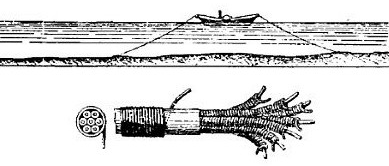
Electronic messaging between users on the same timesharing computer was developed fairly soon after time-sharing computer systems were available, beginning around 1965 – including both instant messaging and mail. I’m interested in network mail, though, so we need to skip forward a few years.
You need a network. And a community.
Around 1968 the initial plans for “ARPANET”, a network to link the various ARPA-funded computers together were underway. Local mail between users on the same system was already a significant part of the nascent community.
Email History through RFCs
Many aspects of email are a lot older than you may think.
There were quite a few people in the early 1970s working out how to provide useful services using ARPANET, the network that evolved over the next 10 or 15 years into the modern Internet.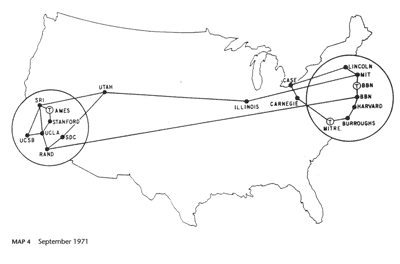
They used Requests for Comment (RFCs) to document protocol and research, much as is still done today. Here are some of the interesting milestones.
April 1971 [rfc 114]RFC 114 A File Transfer Protocol.[/rfc] One of the earliest services that was deployed so as to be useful to people, rather than a required part of the network infrastructure, was a way to transfer files from one computer to another. In the [rfc 114]earliest versions[/rfc] of the service I can find it could already append text to an existing file. This was soon used for sending short messages, initially to a remote printer from where it would be sent by internal mail, but soon also to a mailbox where they could be read online.
August 1971 [rfc 221]RFC 221 A Mail Box Protocol, Version-2[/rfc] had this prescient paragraph:
Email saves trees!
The arrival of my first spam email was a bit of a shock. I’d been on the internet for years by that point and had never seen junk mail in my inbox. Of course, the Internet was a very different place. The web was still a toddler. There was no email marketing industry. In fact, there wasn’t much commerce on the web at all. Much of the “surfing” I did was using gopher and ftp rather than the fancy new web browser called NCSA Mosaic. To share pictures we actually had to send printouts by postal mail.
It wasn’t just getting spam that was memorable (oh, great! now my inbox is going to look like my postal box, stuffed full of things I don’t want), it was the domain name: savetrees.com. Built into the domain name was an entire argument defending spam on the grounds of environmental friendliness. By sending spam instead of postal mail we could save the earth. Anyone who didn’t like it was morally corrupt and must hate the planet.
Why do I mention this history? During a discussion on a list for marketers earlier this week, multiple people mentioned that email marketing was clearly and obviously the much more environmentally sound way to do things. I mentioned this over on Facebook and one of my librarian friends (who was one of the people I was email friends with back in those early days) started doing her thing.
She posted her findings over on the Environmental News Bits blog: The comparative environmental impact of email and paper mail. It’s well worth a read, if only because a lot of companies have really looked into the issue in great detail. Much greater detail than I thought was being put into the issue.
I shared one of the links she found, the 2009 McAfee study, with the email marketing group discussing the issue. (You may want to put down the drinks before reading the next line.) It was universally panned as marketing and therefore the conclusions couldn’t be trusted.
Anyone who pays any attention knows that nothing we do and none of the choices we make are environmentally neutral. Plastic bags were supposed to save trees from becoming paper bags, but turned into an environmental mess of their own.
Simple slogans like “email saves trees” might make marketers feel better, and may have gained Cyberpromo a strong customer base in the early days. But the reality is different.
The more things change
I was doing some research about the evolution of the this-is-spam button for a blog article. In the middle of it, I found an old NY Times report about spam from 2003.
Read MoreEmoji – older than you think

It might just be random 17th Century punctuation, but this poem from 1648 certainly seems to be using a smiley face emoji.
(OK, it’s probably not intentional, but it’s lovely intersection of the emoji and the word.)
A Spam Blast from the Past
A couple of days ago an ex-employee of Opt-In Inc., was kind enough to do a Reddit AMA answering questions about their experience working with Steve Hardigree in the “legitimate” email marketing industry, back in the early 2000s.
The whole thing is worth a read, but I thought I’d share some of his more interesting answers here.
Everyone knows everyone
The 500 mile email
This is a great story from Trey Harris about a real email delivery issue from the mid 1990s.
Here’s a problem that sounded impossible… I almost regret posting the story to a wide audience, because it makes a great tale over drinks at a conference. 🙂 The story is slightly altered in order to protect the guilty, elide over irrelevant and boring details, and generally make the whole thing more entertaining.
I was working in a job running the campus email system some years ago when I got a call from the chairman of the statistics department.
“We’re having a problem sending email out of the department.”
“What’s the problem?” I asked.
“We can’t send mail more than 500 miles,” the chairman explained.
I choked on my latte. “Come again?”
“We can’t send mail farther than 500 miles from here,” he repeated. “A little bit more, actually. Call it 520 miles. But no farther.”
“Um… Email really doesn’t work that way, generally,” I said, trying to keep panic out of my voice. One doesn’t display panic when speaking to a department chairman, even of a relatively impoverished department like statistics. “What makes you think you can’t send mail more than 500 miles?”
“It’s not what I think,” the chairman replied testily. “You see, when we first noticed this happening, a few days ago–”
“You waited a few DAYS?” I interrupted, a tremor tinging my voice. “And you couldn’t send email this whole time?”
“We could send email. Just not more than–”
“–500 miles, yes,” I finished for him, “I got that. But why didn’t you call earlier?”
“Well, we hadn’t collected enough data to be sure of what was going on until just now.” Right. This is the chairman of *statistics*. “Anyway, I asked one of the geostatisticians to look into it–”
“Geostatisticians…”
“–yes, and she’s produced a map showing the radius within which we can send email to be slightly more than 500 miles. There are a number of destinations within that radius that we can’t reach, either, or reach sporadically, but we can never email farther than this radius.”
“I see,” I said, and put my head in my hands. “When did this start? A few days ago, you said, but did anything change in your systems at that time?”
“Well, the consultant came in and patched our server and rebooted it. But I called him, and he said he didn’t touch the mail system.”
“Okay, let me take a look, and I’ll call you back,” I said, scarcely believing that I was playing along. It wasn’t April Fool’s Day. I tried to remember if someone owed me a practical joke.
I logged into their department’s server, and sent a few test mails. This was in the Research Triangle of North Carolina, and a test mail to my own account was delivered without a hitch. Ditto for one sent to Richmond, and Atlanta, and Washington. Another to Princeton (400 miles) worked.
But then I tried to send an email to Memphis (600 miles). It failed. Boston, failed. Detroit, failed. I got out my address book and started trying to narrow this down. New York (420 miles) worked, but Providence
(580 miles) failed.
I was beginning to wonder if I had lost my sanity. I tried emailing a friend who lived in North Carolina, but whose ISP was in Seattle. Thankfully, it failed. If the problem had had to do with the geography of the human recipient and not his mail server, I think I would have broken down in tears.
Having established that–unbelievably–the problem as reported was true, and repeatable, I took a look at the sendmail.cf file. It looked fairly normal. In fact, it looked familiar.
I diffed it against the sendmail.cf in my home directory. It hadn’t been altered–it was a sendmail.cf I had written. And I was fairly certain I hadn’t enabled the “FAIL_MAIL_OVER_500_MILES” option. At a loss, I telnetted into the SMTP port. The server happily responded with a SunOS sendmail banner.
Wait a minute… a SunOS sendmail banner? At the time, Sun was still shipping Sendmail 5 with its operating system, even though Sendmail 8 was fairly mature. Being a good system administrator, I had standardized on Sendmail 8. And also being a good system administrator, I had written a sendmail.cf that used the nice long self-documenting option and variable names available in Sendmail 8 rather than the cryptic punctuation-mark codes that had been used in Sendmail 5.
The pieces fell into place, all at once, and I again choked on the dregs of my now-cold latte. When the consultant had “patched the server,” he had apparently upgraded the version of SunOS, and in so doing downgraded Sendmail. The upgrade helpfully left the sendmail.cf alone, even though it was now the wrong version.
It so happens that Sendmail 5–at least, the version that Sun shipped, which had some tweaks–could deal with the Sendmail 8 sendmail.cf, as most of the rules had at that point remained unaltered. But the new long configuration options–those it saw as junk, and skipped. And the sendmail binary had no defaults compiled in for most of these, so, finding no suitable settings in the sendmail.cf file, they were set to zero.
One of the settings that was set to zero was the timeout to connect to the remote SMTP server. Some experimentation established that on this particular machine with its typical load, a zero timeout would abort a connect call in slightly over three milliseconds.
An odd feature of our campus network at the time was that it was 100% switched. An outgoing packet wouldn’t incur a router delay until hitting the POP and reaching a router on the far side. So time to connect to a lightly-loaded remote host on a nearby network would actually largely be governed by the speed of light distance to the destination rather than by incidental router delays.
Feeling slightly giddy, I typed into my shell:
A blast from the past
I’m sitting here watching Iron Chef (the real one, not the American version) and surfing around on SFGate.com. It’s a slow night catching up on all the news I’ve missed this week while off traveling. I see a link on the front page: “Web marketer ordered to pay Facebook $711M.” As I click I wonder if I know the web marketer in question. A former client? A name I recognize?
Read More